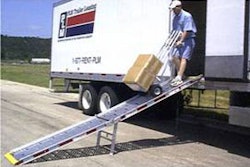Denver: In the latest edition of its Supply Chain Review entitled, "Moving Freight Today—How Shippers Are Creating Greater Capacity, Reliability and Rate Stability," ProLogis found that soaring fuel prices have prompted supply chain executives across the United States to scrutinize their logistics networks with a new level of urgency.
The report, authored by University of Denver logistics expert Paul Nuzum, explores numerous strategies and tactics that shippers are using to improve the efficiency of their supply chain networks in the face of higher transportation costs; port, rail and highway congestion; labor shortages; and complex security issues.
"Maximizing efficiency is a paramount concern, but so is maintaining the highest levels of service to customers. All of the improvements, big and small, that freight managers are making today in their companies' internal processes and systems -- many of which are being adopted as a short-term response to higher freight costs -- will also deliver long-term benefits up and down the entire supply chain," says Leonard Sahling, first vice president of research for ProLogis.
The new ProLogis report is based on in-depth interviews conducted with supply chain executives at more than 30 major companies from a variety of industries. Among the report's findings are the following:
• Many companies are adding consolidation and deconsolidation centers to their supply chain networks to ensure that freight gets moved in full container loads and truckloads. These centers serve as freight pooling hub" and, under the right circumstances, can substantially increase the efficiency of a company's logistics operations.
• Companies are "de-coupling" freight costs from product costs. In the past, suppliers generally paid freight charges and simply added them to their materials invoices. Today, companies are adopting practices that ensure that they receive the best shipping rates available on a consistent basis, through centralized command and control of freight movement.
• Shippers are working hard to improve collaboration with carriers and other transportation providers, through better forecasting, shorter payment cycles and implementation of two-way operational scorecards.
• Logistics managers are creating new capacity in their networks by eliminating sources of waste and inefficiency. Techniques include collaborating with other companies to reduce the number of empty trucks on the road and establishing 24/7 work schedules at distribution centers.


















